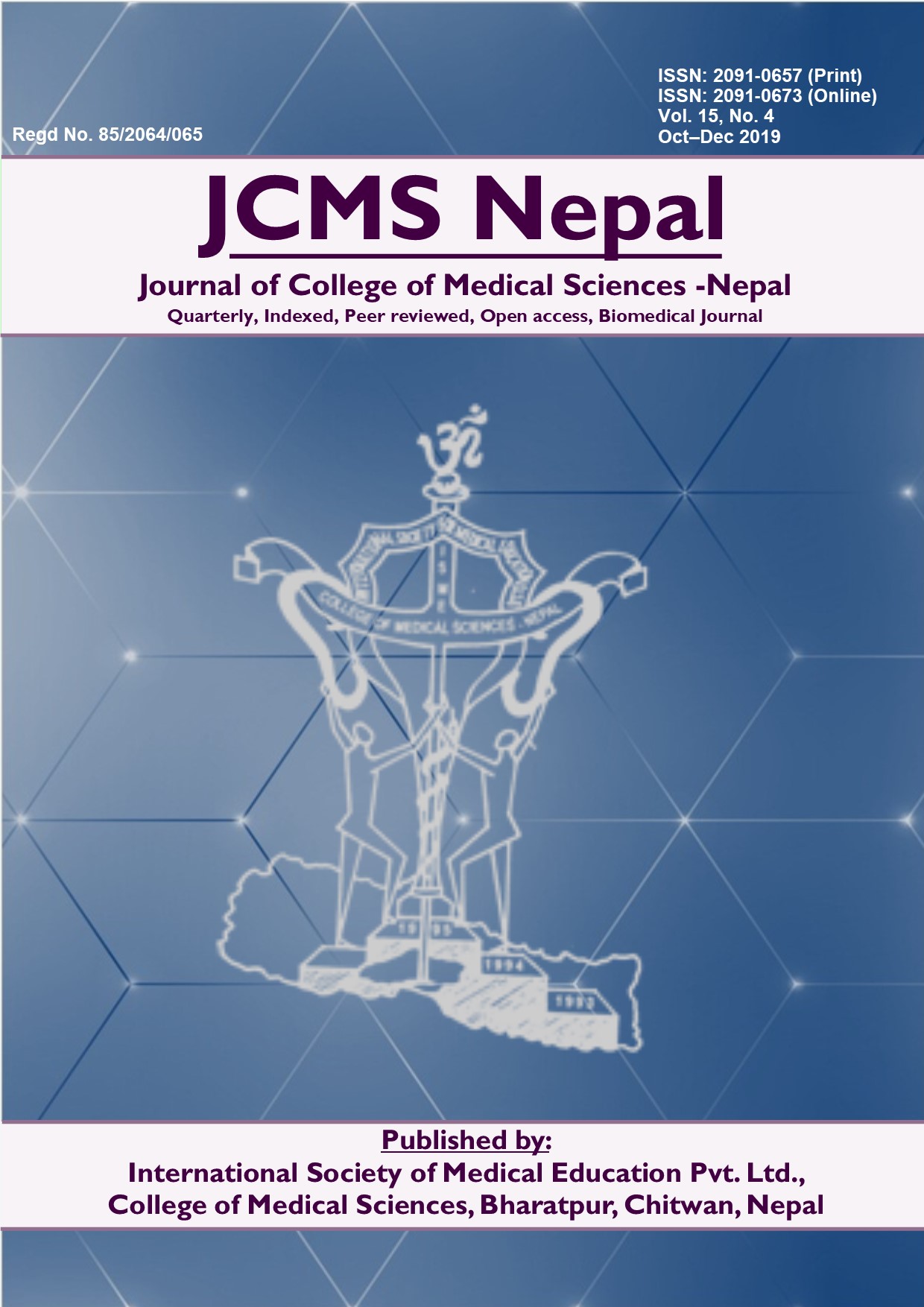Clinical Evaluation of Residual Ridge Morphology of Maxillary Arch in Relation to Ageing and Length of Edentulism
DOI:
https://doi.org/10.3126/jcmsn.v15i4.26199Keywords:
maxillary ridge, length of edentulism, residual ridge resorption, ridge morphologyAbstract
Background: Ridge morphology is one of the important recognized factors affecting denture retention, stability, support and masticatory function in edentulous patients. The form of ridge affects the planning as well as determines the prognosis of treatment. The objective of this study was to assess maxillary residual ridge morphology according to American College of Prosthodontists (ACP) classification system and to find association between type of ridge morphology of maxillary arch with age and duration of edentulism.
Methods: The study was conducted among 87 completely edentulous patients above 40 years of age visiting department of prosthodontics Nepal Medical College. The morphology of maxillary residual ridges were clinically evaluated and classified according to criteria given by American College of Prosthodontists (ACP) classification system. The findings were associated with age, sex, duration of edentulism and complete denture wear.
Results: In this study, more than two thirds of the patients belonged to the age group of 60 – 80 years and their mean duration of edentulousness was seen to be 5.7 years. One fifth of the patients were using previous complete dentures. Type A maxillary ridge morphology was found to be the most prevalent. The type of maxillary ridge morphology was not found to be associated with either age or gender of an individual however it varied significantly with length of edentulism and duration of complete denture wears.
Conclusions: Within limitations, it can be concluded that maxillary ridge morphology was not associated with age of an individual however the longer duration of edentulism or complete denture use would make the type of ridge morphology more unfavorable.
Downloads
Downloads
Published
How to Cite
Issue
Section
License
This license enables reusers to copy and distribute the material in any medium or format in unadapted form only, for noncommercial purposes only, and only so long as attribution is given to the creator.




